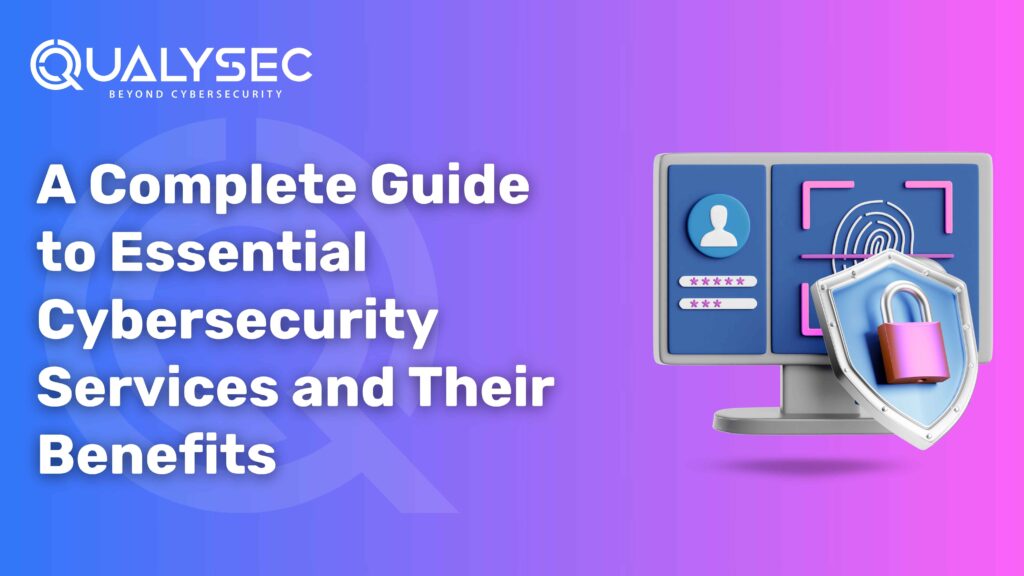Cybersecurity Risk Assessment: Key Steps and How to Perform
Most companies cannot keep up with cyber threats; therefore, every company needs a thorough cybersecurity risk analysis. Whether you are a startup creating your first security framework or a company ensuring GDPR or PCI DSS compliance, awareness of your cyber threats is the cornerstone of an efficient cybersecurity system. Identifying, analyzing, and ranking dangers to your company’s information systems is made possible by a cybersecurity risk assessment. It not only protects your data but also protects your reputation, guarantees legal compliance, and builds stakeholder trust. This blog aims to: Which cybersecurity risk assessments are relevant? What Are Risk Assessments in Cybersecurity? The procedure of finding possible hazards to your IT environment, Vulnerability Assessment Report, and estimating the possible impact if those vulnerabilities are used is known as a cybersecurity risk assessment. Effective controls will help one to lower the risk to an acceptable degree eventually. Organizations can use cyber threat assessments to: Note: Within six months of a cyber attack, more than 60% of small companies go bankrupt. Regular cyber risk evaluations could hold the secret to the continued existence of your company. Latest Penetration Testing Report Download Why Is Cybersecurity Risk Assessment Important? Every organization—whatever its size—requires a security risk assessment for several important reasons: Avoid financial loss from data leaks and downtime Meet legal standards (GDPR, HIPAA, PCI DSS, ISO 27001) Keep client confidence and reputation safe. Enhancement of preparedness and incident response Give IT funding top priority to minimize risk as much as possible. Leave your digital assets secured. Make a free consultation with Qualysec, a leader in cybersecurity assessment services, to get expert opinions on your cybersecurity profile. What Are the 5 Steps to a Cybersecurity Risk Assessment? Although a cybersecurity risk assessment can be difficult, breaking it into five easy stages helps to streamline the procedure. These are the basic phases: Step 1: Identify Assets and Scope Defining scope is essential before you evaluate any risk. This encompasses: Software and information systems Financial records, IP, data types (PII) Users and corporate capabilities Map your entire IT environment using asset inventory solutions and records. Step 2: Identify Threats and Vulnerabilities Threats can include: Unpatched software, insider attacks, ransomware, third-party hazards, phishing attacks. Weaknesses that threats can use, like weak password policies, open ports, or obsolete firewalls. Make use of: Feed of threat intelligence Data on historic occurrence Not sure of the source of your threats? Let Qualysec help. Qualysec finds vulnerabilities before hackers do with cutting-edge equipment and skilled analysts. Make an appointment for a vulnerability assessment now. Step 3: Assess Impact and Likelihood Not all risks are the same. It’s important to assess the impact and establish the likelihood. This will help to analyze the threat’s degree of probability. Let us find out what effect this would have. The table below shows the risk level, impact, and likelihood of different threats. Threat Likelihood Impact Risk Level Ransomware High High Critical Unpatched OS Medium Medium Moderate Social engineering High Low Medium Step 4: Prioritize Risks According to your risk matrix, arrange risks under: Critical: demands immediate action High: plan for early correction Medium: monitor and handle strategically. Low: keep under surveillance Particularly crucial for companies with tight security budgets, this stage lets you prioritize the most destructive risks first. With Qualysec’s Expert Risk Analysts, give first attention to what matters. Let Qualysec specialists lead your remediation plan to lower downtime, boost compliance, and protect delicate systems. Obtain your risk profile right away. Step 5: Mitigate, Monitor, and Review Once risks are prioritized: Establish controls: firewalls, MFA, IDS, employee training, etc. Watch constantly for fresh dangers. Review evaluation quarterly or after significant changes like system upgrades, mergers. Document everything in a risk assessment report, stating: assets and threats. How to Perform a Cybersecurity Risk Assessment: Step-by-Step Cybersecurity risk assessment is a systematic approach that helps to find, assess, and reduce threats to an organization’s digital assets. It not only guarantees legal compliance but also improves your security posture. Let’s go further with the fundamental stages: 1. Determine the Framework Begin by clarifying the boundaries of your analysis. Describe the regulatory responsibilities of your company (e.g., GDPR, HIPAA, PCI DSS) and match the risk analysis to your business goals. Set your risk tolerance as well: how much risk is acceptable to the company? This enables one to rank which hazards call for quick attention. 2. Get the team together Establish a cross-functional evaluation team comprising process owners, IT/security experts, departmental heads, and compliance officers. This varied input guarantees all systems and data flows are properly evaluated. 3. Conduct an asset inventory You cannot safeguard what you are not aware of. Complete inventory of all assets—hardware, software, data, and network components: For system scanning and vulnerability identification, use Nmap, Nessus, or Qualys. CMDBs (configuration management databases) enable automatic monitoring of digital assets. Physical assets, such as access cards, servers, or documents, might call for manual surveys. 4. Threat Modeling Once assets are discovered, analyze how they might be attacked using threat modeling. Here, the STRIDE approach comes in handy: Information revelation, denial of service, elevation of privilege, spoofing, tampering, rejection, and denial of privilege. This aids in finding possible flaws and means hackers might exploit them. 5. Threat Grading Use industry frameworks to evaluate and measure risks like: NIST SP 80030 helps to prioritize, assess, and identify risks. ISO/IEC 27005: for an international approach to risk management. Useful for business decisions, FAIR—to measure risk in monetary terms. 6. Report and Suggest Develop an executive-level report converting technical results into corporate risk. Incorporate: Risk heat maps Analysis of Control Gaps Suggested solutions for reducing hazards with deadlines 7. Implement the Strategy for Mitigation Prioritize your risk treatment strategy as follows: Technical safeguards such as encryption, firewall installations, and patch systems. Employee education and cybersecurity policies are among other administrative safeguards. Physical controls such as CCTV, biometric access, or secure locks. A well-executed cybersecurity risk assessment is a continuous process that safeguards your company from changing threats rather than a






